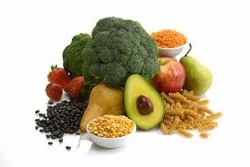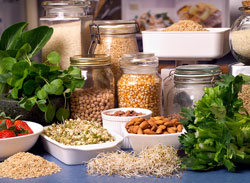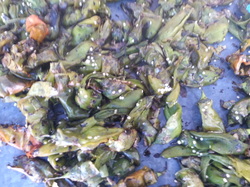Many varieties of hummus can be derived from the traditional recipe by either substituting other types of beans (e.g., soy beans, black beans, white beans) or by adding other ingredients such as roasted eggplant, roasted red peppers, pine nuts, cilantro or parsley, olives, roasted tomatoes, jalapenos, chipotle, and basil to give the hummus different flavors.
Hummus is delicious! I love to use hummus as a spread for veggie sandwiches or a dip for veggies. I make my own roasted red pepper hummus because it’s very simple to make (see the recipe in the “Recipe” tab) and I know exactly what’s in it. Which brings me to an experience I had at a Starbucks. My boyfriend and I were in a Starbucks and looking for a plant-based snack when we noticed something on the menu that said “Crisp, seasonal vegetables served with a chipotle hummus dip”. So, we ordered it. We were so wrapped up in our conversation that neither of us really noticed that the hummus looked suspiciously creamy and smooth, instead of the normal thick and slightly course texture from tiny blended bits of chickpeas. We each dipped a frozen veggie (that’s another story) into the hummus and took a bite, and it didn’t taste right to either of us. We learned from the staff why the hummus was so smooth and creamy: the second ingredient was mayonnaise! We never would have suspected that hummus would have mayonnaise in it, and of course, we only finished the frozen vegetables and didn’t eat any more of the hummus.
That experience served as a good reminder when dining out to always ask about ingredients, even when I’m ordering foods that are traditionally plant-based, because if it wasn’t prepared in front of me, I really have no idea what I’m actually eating. Which brings to mind another point: don’t get fooled into believing something is healthy just because healthy words are included in the name or description. The only way to know if it’s really healthy is to know exactly what is in it and how much.
After that experience today, I’m thinking that maybe Starbucks should stick with what it knows best, coffee.







 RSS Feed
RSS Feed